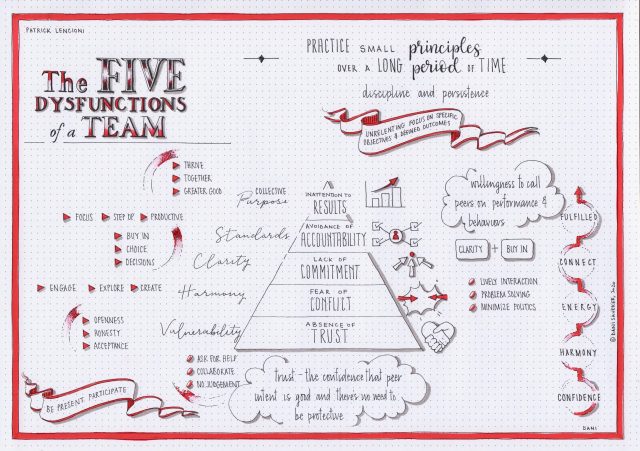Article
How to Create Systems that Work in Your Church Plant
Noah Madden
You probably didn't become a planter because you love logistics... Even still, here's how implementing these intentional systems can allow you to further the gospel more effectively.

Trust the Process
To be honest, when I was first asked to write this article, my first thought was, Man, our systems really need some work. I say this because creating efficient and fruitful systems in your church plant requires a consistent commitment to check under the hood and make changes. If you are reading this and your plant has systems that are still a work in process, welcome to the club. Whether it is your first-time guest follow-up, volunteer onboarding, membership classes, or your pastoral pipeline; systems are a labor of love that require much investment on the front end. However, rest assured that the investment is well worth it because people matter and the mission is urgent.
When it comes to implementing systems, there are many things we have learned along the way. So, here are a few steps that will help you create systems that work in your church plant.
Clarify the Vision
Systems work to make the vision a reality, but if your vision and systems are out of alignment, your structures will lead people somewhere else. Your systems take people on a journey, and you want to make sure it is the same journey that your vision communicates. Having a clear mission statement is the first step, but in order to create and implement systems that serve the vision, there must be a clear plan from infancy to maturity. If the vision of your church is to make disciples that engage the city with the gospel, people need to have steps along the way, and there need to be systems in place to guide them. Good systems come from good vision. Efficient and fruitful structures begin with a clear, well-developed vision.
Think of systems as spiritual formation—not just administration.
Create a First Draft
A few guidelines to keep in mind as you being the process of developing your systems: organization, sustainability, automation, and multiplication. Without organization, your systems will fail. Spreadsheets and software are a system’s best friend. If you are not naturally organized, you will need to grow in this area or find someone organized to manage your systems. While you are getting organized, you want to ask if this system is sustainable. If your system is taking more of your team’s bandwidth than it is helping people take their next steps, it probably needs more tinkering. Sustainability is not just an ideal to keep in mind; it is an essential filter for the church planter and core team, especially in the early years.
Speaking of bandwidth, automation is a beautiful thing that allows you to maximize your margin across systems. Most good church software offers automation. However, it does requires more investment on the front end. If you can create a system that automates communication or an assimilation workflow, doing so will conserve your margin and allow you to focus on other areas of ministry. Another aspect of system development to consider is multiplication. If systems are a part of your spiritual formation pathway, we should design our systems with multiplication in mind. As a new church, you are managing most if not all of your systems. Build into your systems’ blueprint a plan for someone else to lead them. This highlights the importance of organization and sustainability. You do not want to have a willing volunteer manage a clumsy system. Investing in the hard work of developing good systems built on good vision and time will show that the investment was worth it.
Research church software and tools options to see which ones best meet your needs.
Here are some suggested resources to look into:
- Planning Center: church management software
- Mail Chimp: email communications
- Slack: group communication
- Trello: planning and task management
Measure and Assess
Once you have a first draft, begin the process of implementation. The beautiful and sometimes hard-to-swallow aspect of structures and systems is that they give you quantifiable data to measure and assess. Sometimes, this means you have to face the reality that your systems aren’t efficient and need adjustments. The most important question to ask about the system is this: Is it working? Is it bringing the vision to life? This is where starting with vision pays off; it gives you a diagnostic baseline with which to assess your systems.
Include others in the diagnostic process. Ask your leaders about their experience with the system. Include opportunities for people who just went through the process to give feedback. But more than anything else, look at the data. What percentage of your first-time guests are becoming second-time guests? That will tell you how your first-time guest follow-up system is performing. What percentage of your congregation is involved in small groups, and is that number increasing? That will tell you how well your assimilation systems are functioning. What is the average time span a volunteer stays in the onboarding queue? That will tell you a lot about the efficiency of your volunteer onboarding system. Think critically, ask hard questions, and invite others into the evaluation process. It’s not enough to have a system; it needs to be a system that actually works.
Collect and record data points at regular intervals so you can measure your systems and chart them over time.
Revise and Reintroduce
Now that you have measurable data and the feedback of others, make the needed changes. Systems are not set-it-and-forget-it structures in your church; they are essential components of the engine that need to go to the mechanic every once in a while. As I said earlier, creating systems that work in your church plant requires a continual commitment to checking under the hood. Once you diagnose opportunities to revise and optimize your system, make those changes and reintroduce them.
Don’t be afraid of making changes. This is a part of the process.
All for the Kingdom
Keep in mind that the context and life stage of your church plays a tremendous role in what systems you need and how effective they are. New churches do not need all the systems of a 15-year-old church, but they might need a robust set-up and tear-down team that an older church would not need. The culture of your context also plays into the effectiveness of your systems. For example, people in my context are more hesitant to give personal information as first-time guests than visitors in other places I have served. This means collecting first-time guest cards requires persistence and creativity.
Systems and structures are not all church planters’ cups of tea. I would guess that the dream you had for your ministry when God called you was not full of process queues and automated emails. Most of us are not necessarily fueled by spreadsheets and software, but faithfulness to Jesus and the Great Commission in church planting requires effective systems. May our commitment to faithful exegesis and evangelism in our community partner well with our commitment to systems that work for the glory of God and the growth of His kingdom.




